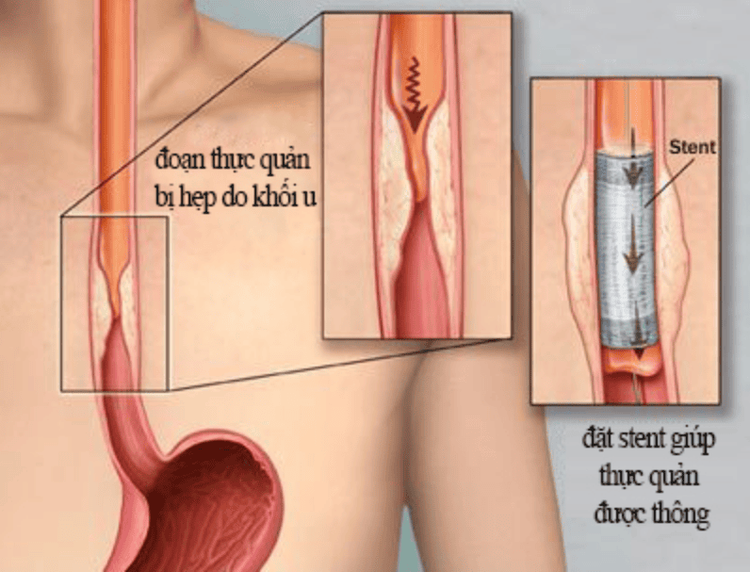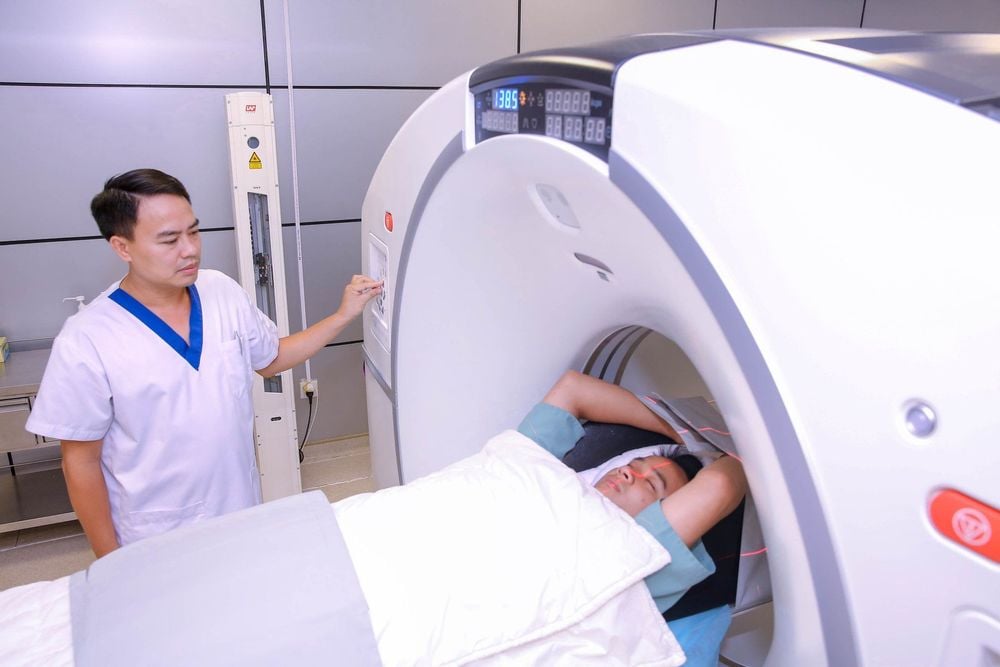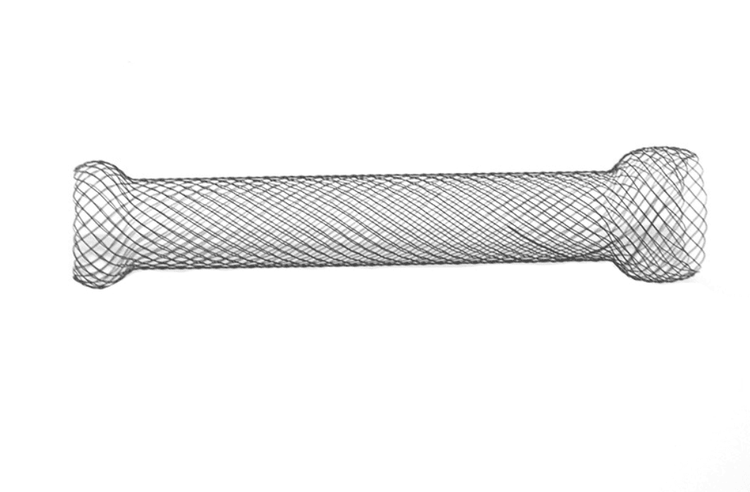This is an automatically translated article.
Patients with end-stage esophageal cancer may die from exhaustion because the tumor is too large to compress, making the patient unable to eat and drink, so they are increasingly exhausted and lack nutrients to nourish the body.
1. What is esophageal cancer?
Esophageal cancer is a malignant disease, arising from the epithelial cells of the esophagus. When the esophagus has cancer, the tumors will affect the patient's eating process, maybe even not eating, from which the patient is undernourished, increasingly depressed and can cause death. death due to excessive exhaustion.Esophageal cancer is a difficult disease to cure, surgical method is the most important treatment measure, but it is quite complicated, can leave many complications. The remaining methods such as radiation therapy, chemotherapy only play a supportive role in treatment. Therefore, early detection of the disease is extremely important in reducing the mortality rate caused by this disease.
2. Risk factors for esophageal cancer
Risk factors for esophageal cancer include:
2.1 Age People over the age of 40, especially men, who regularly drink alcohol will have a high risk of esophageal cancer, especially at risk. The risk is even higher for people who both drink and smoke.
2.2 Eating habits People who have a habit of eating hot, drinking hot or eating foods containing nitrosamines such as: Pickles, fish sauce, a diet low in vegetables and fruits will increase the risk of cancer. manage.

Thói quen ăn dưa muối chứa nitrosamin làm tăng nguy cơ ung thư thực quản
2.3 People with diseases of the esophagus People with diseases of the esophagus such as:
Gastroenteritis, chronic reflux oesophagitis, HPV infection, narrowing ulcer of the lower esophagus,... In the family Some people have esophageal cancer. Obesity also increases the risk of disease. People with other cancers in the head, face and neck area such as: Oropharyngeal cancer, lower pharynx - larynx,... >>See more: Update on risk factors for esophageal cancer (Part 1) – Article Written by Master, Doctor Mai Vien Phuong - Department of Examination & Internal Medicine - Vinmec Central Park International General Hospital
3. The role of esophageal stenting technique for patients with end-stage esophageal cancer
Today, thanks to the advancement of science and technology, there are many means to help screen for esophageal cancer early, but the number of patients with esophageal cancer coming to the hospital in the late stages is still quite high. For patients in the terminal stage, the average survival time is only about 18 months, the 5-year survival rate is only about 7%.
Surgery is the mainstay of treatment for esophageal cancer. However, there are also cases where surgery is not possible because the tumor is too large or has spread to other organs. For these patients, the risk of death is high if the nutritional problem is not resolved. Patients may even die from malnutrition before dying of cancer. Especially in the late stage when the tumor has invaded most or all of the esophagus, the patient cannot even drink even a sip of water.
Previously, to improve nutrition for patients, doctors would conduct endotracheal intubation, inserting a tube from the throat to the stomach to bring food straight in. This method causes a lot of pain for the patient and it also has many potential complications. Endoscopic interventional technique for esophageal stenting is the endoscopic insertion of a special metal stent into the narrowed esophagus with the aim of re-establishing the esophageal circulation. The advent of this technique has helped patients more comfortable, eating and drinking through the mouth. Thereby, helping patients improve their quality of life.

Kỹ thuật đặt stent thực quản giúp bệnh nhân ăn uống dễ dàng hơn
4. Indications and contraindications of stenting technique for end-stage esophageal cancer
4.1. Indications Esophageal stenting technique is indicated for patients with narrowing esophageal cancer that is no longer indicated for surgery. In addition, this technique is also indicated for patients with esophageal fistula due to tumor.
4.2. Contraindications Patients with myocardial infarction. The patient has severe cardiopulmonary disease. The patient has a severe coagulopathy. Patients with severe thrombocytopenia. The patient is taking antiplatelet drugs.
5. Steps to perform esophageal stenting technique
To perform esophageal stenting technique in the treatment of end stage esophageal cancer, patients need to do some of the following paraclinical tests:
Endoscopy to assess the degree of esophageal stricture. Chest CT scan to assess the location, shape, length and extent of invasion of the surrounding tumor.

Bệnh nhân được chỉ định chụp CT lồng ngực trước khi đặt stent thực quản
Cardiopulmonary imaging to evaluate metastatic lesions. The procedure takes only about 30 minutes, after 24 hours, the patient can eat and drink normally and go home. After 1 month, all patients with esophageal stents still eating well, no complications due to malnutrition were detected.
Esophageal stenting technique in the treatment of end-stage esophageal cancer includes the following steps:
5.1 Step 1: Check records 5.2 Step 2: Examine the patient Assess the patient's vital function to ensure safety before the procedure.
5.3 Step 3: Performing the technique After the patient is pre-anesthetized or anesthetized, esophageal stents will be placed.
First, put the light through the mouth down to the esophagus, pass through the esophageal stricture, and at the same time shine the X-ray screen to determine the narrow position corresponding to the position on the chest wall and mark again. After the marking is complete, continue to bring the scope down to the stomach. Next, thread the guidewire through the surgical channel of the endoscope into the stomach. Keeping the guidewire in the stomach, pull the endoscope out of the esophagus. Insert the stent into the esophagus via a guidewire to the location marked under the X-ray magnifying screen. Proceed to open the stent, when finished, remove the guidewire. Insert the bronchoscope to check the position of the stent. Currently, there are retractable stents, so when performing the procedure, there is no need for X-ray screens anymore, because after placing, if the position is not correct, it is possible to pull the stent to bring it to the hospital. position to be placed.

Loại Stent được sử dụng trong điều trị ung thư thực quản giai đoạn cuối
6. Complications and treatment
After the procedure, it is necessary to monitor for possible complications such as:
Move the stent: In this case, it is necessary to reset the stent or pull the stent back to its original position with a retractable stent. Complications of anesthesia such as low blood pressure, respiratory failure, nausea, vomiting, ... In this case, it is necessary to conduct intravenous fluids and oxygen. Esophageal stenting is an essential treatment for end-stage esophageal cancer. This technique helps the patient to eat and drink through the mouth as usual, without pain, helping to improve the patient's quality of life.
Any questions that need to be answered by a specialist doctor as well as customers wishing to examine and treat at Vinmec International General Hospital, you can contact Vinmec Health System nationwide or register online HERE.













